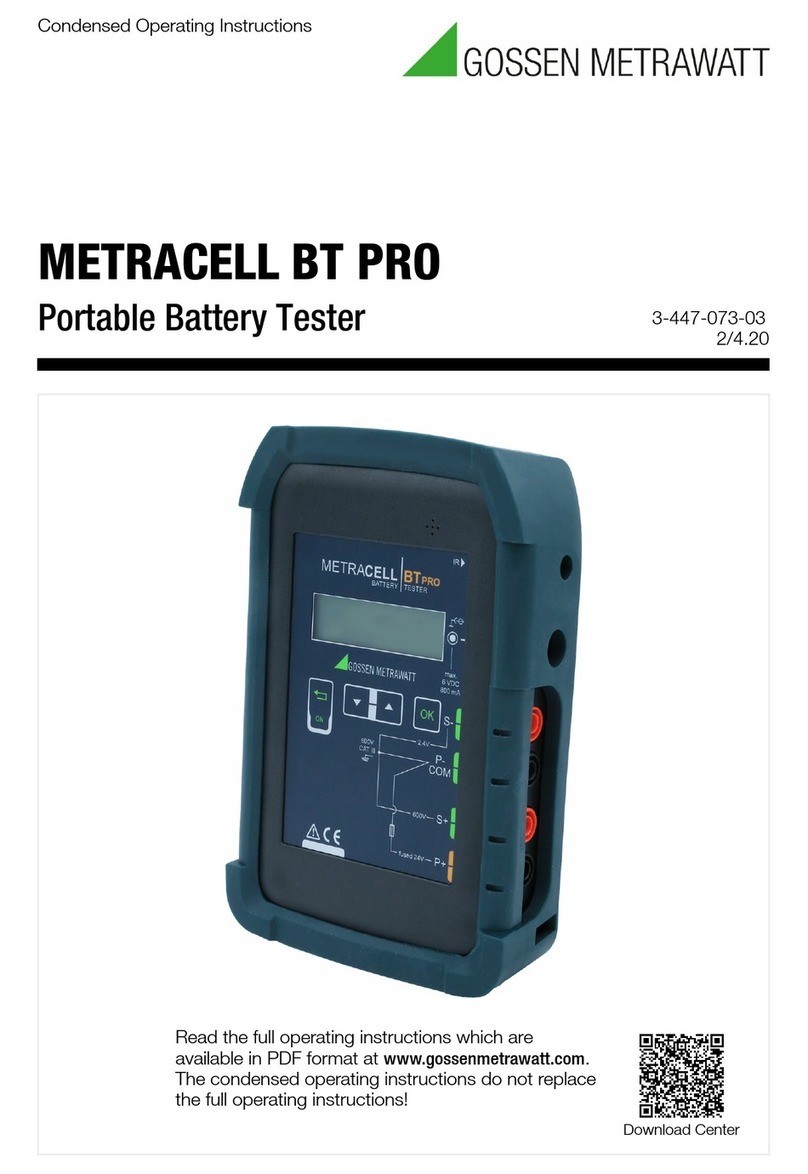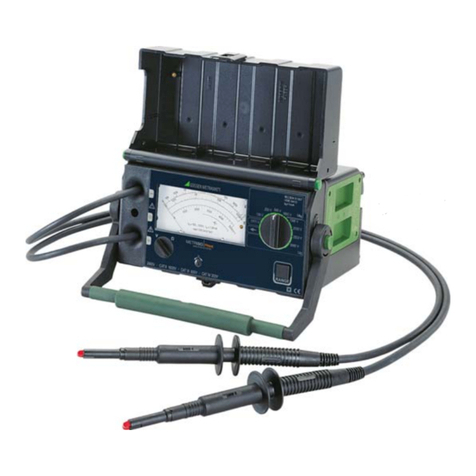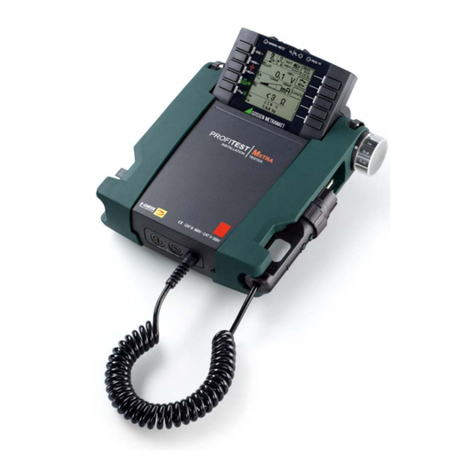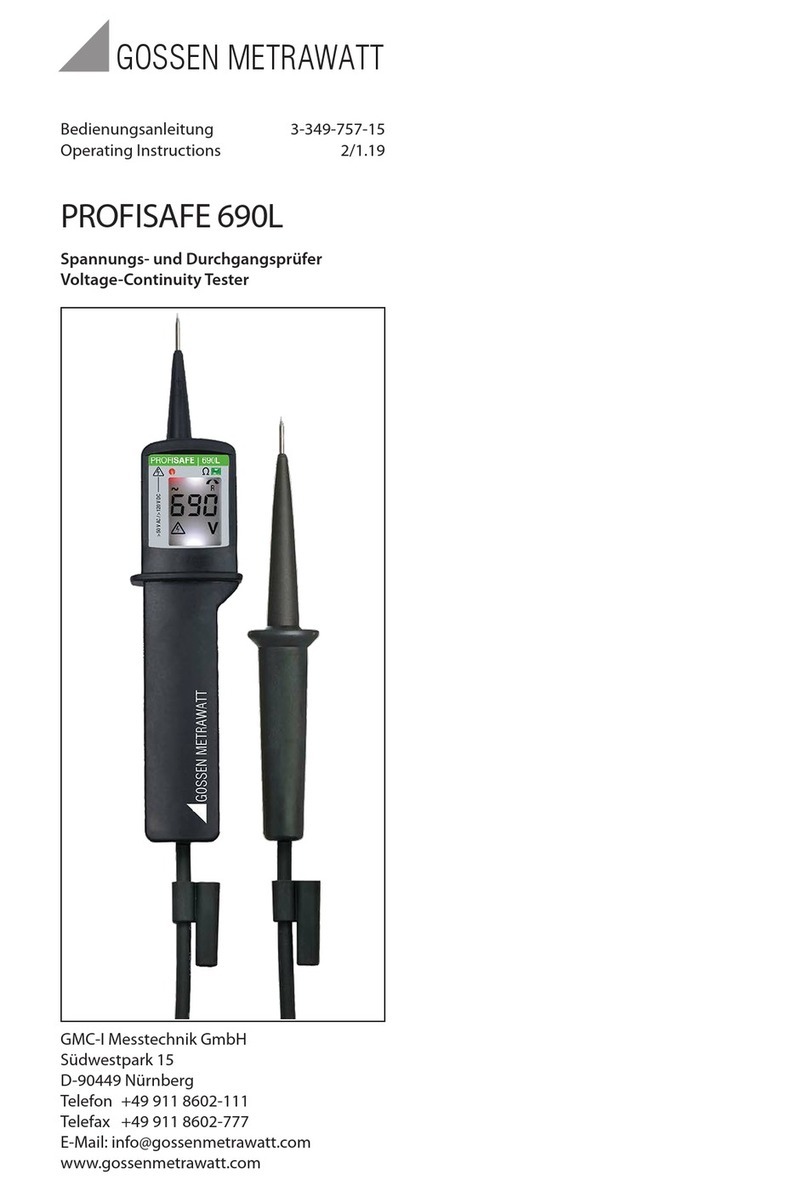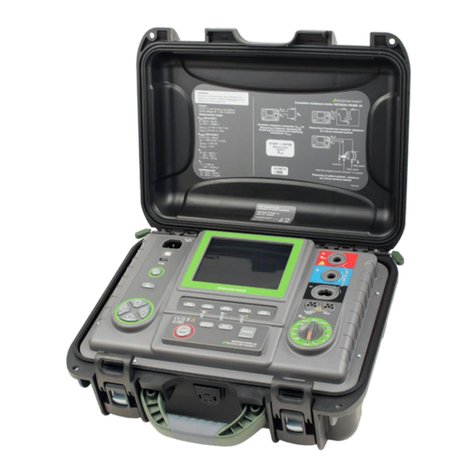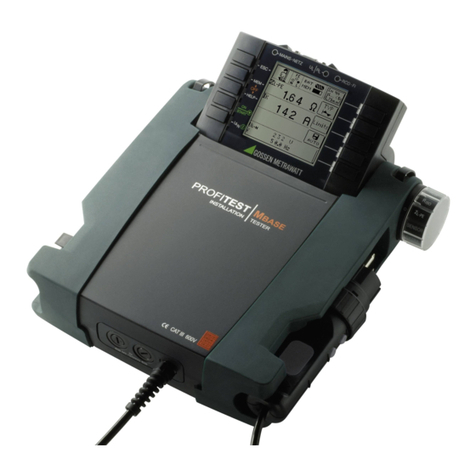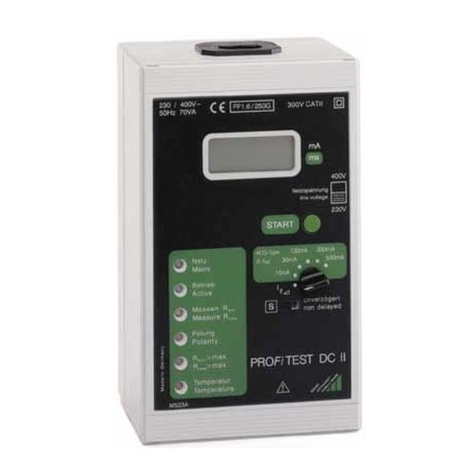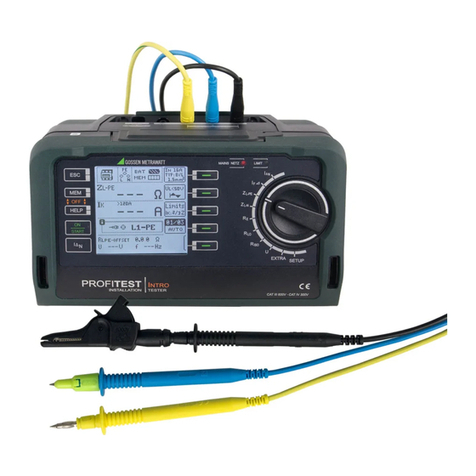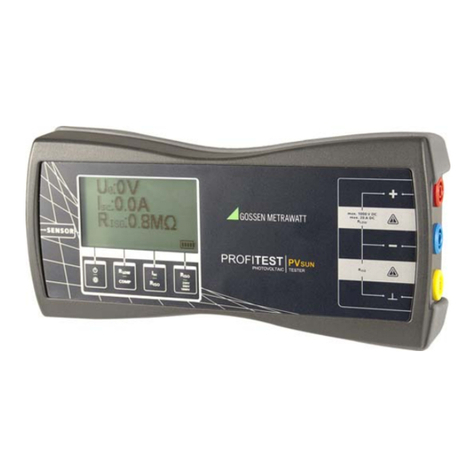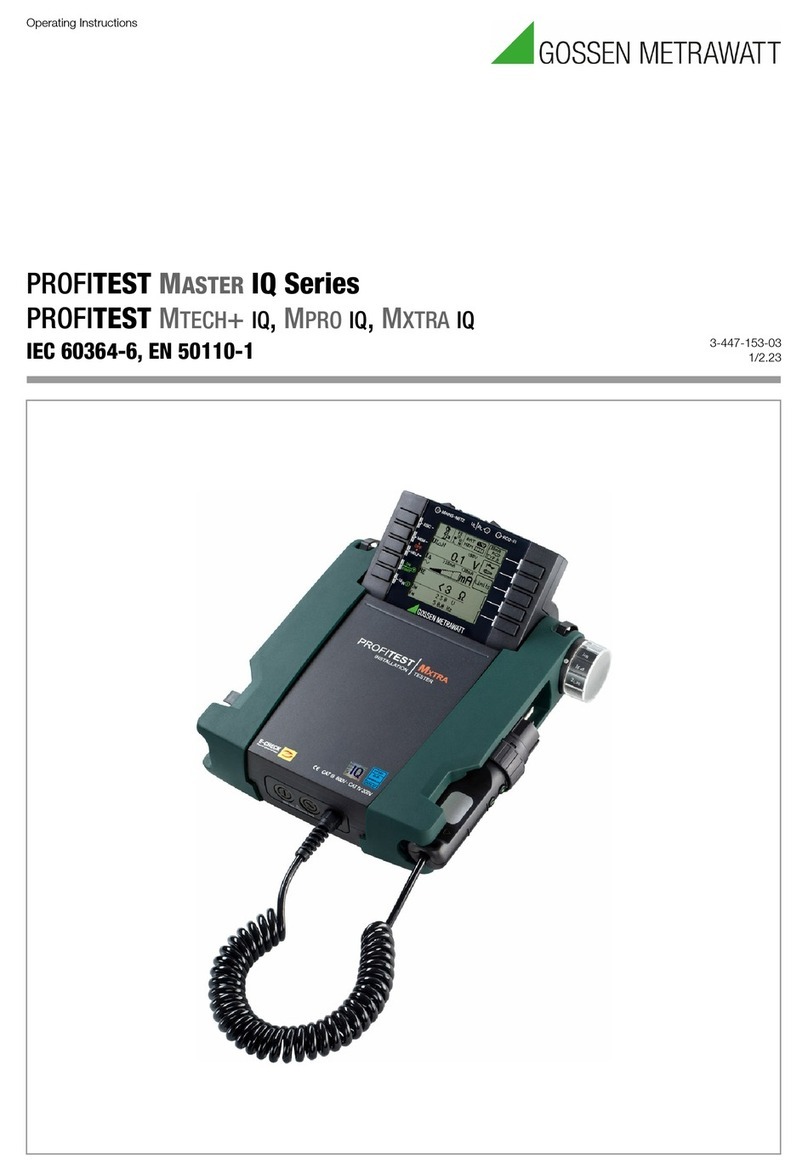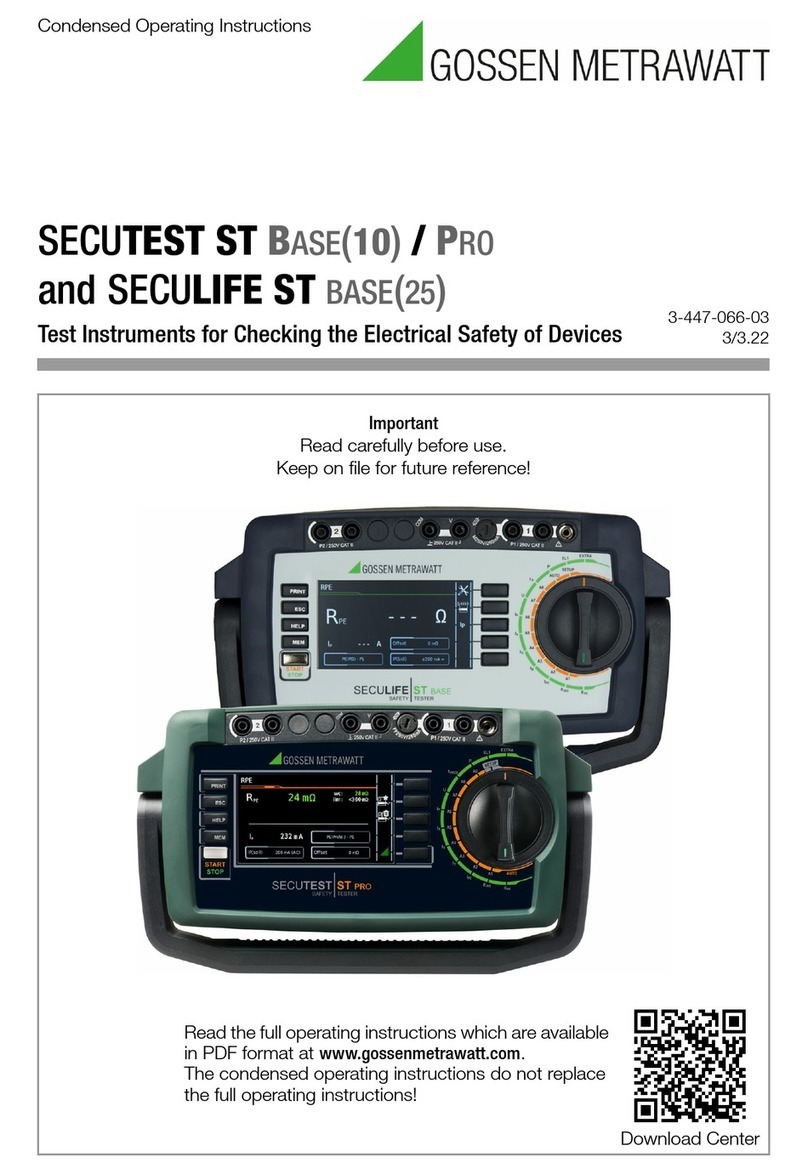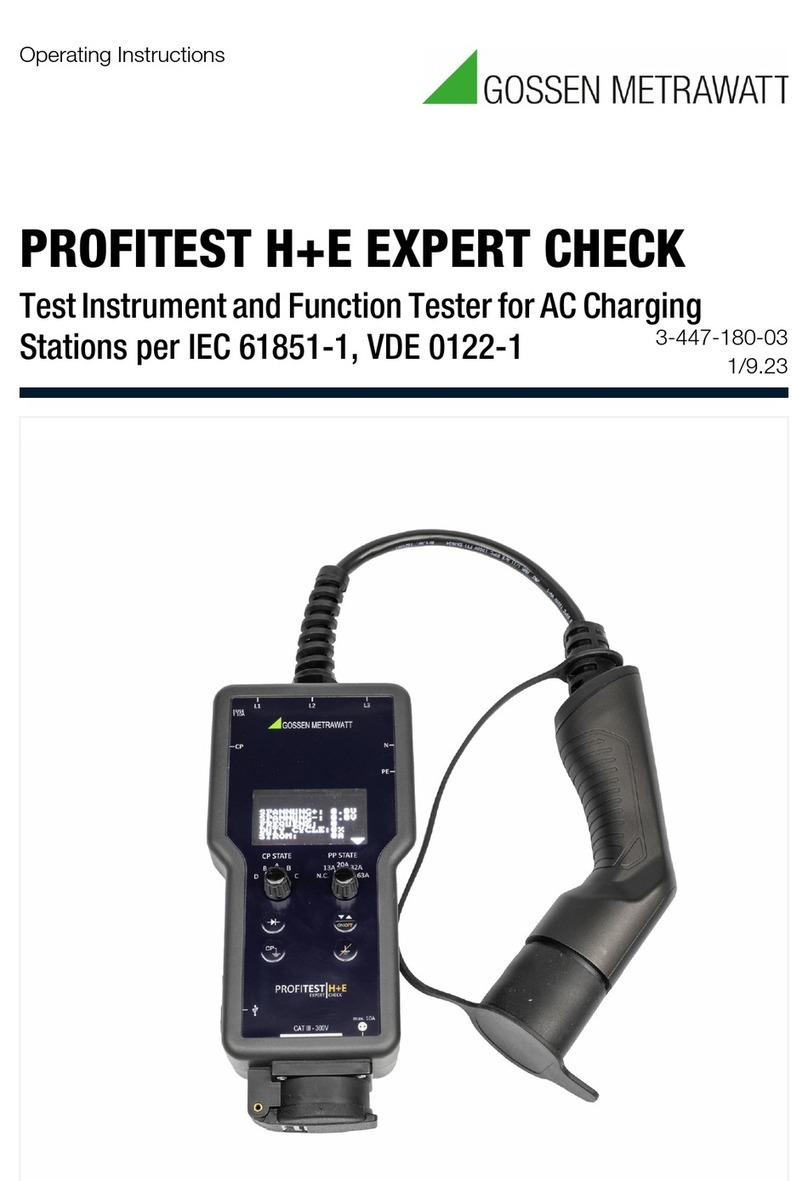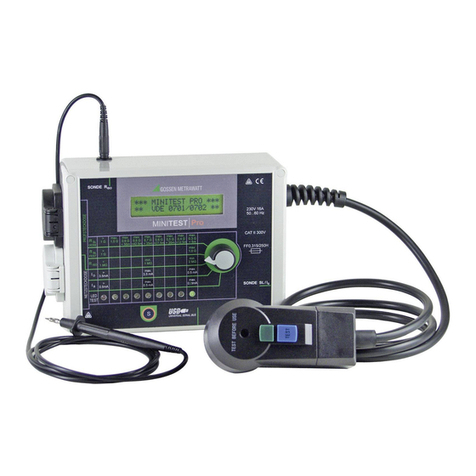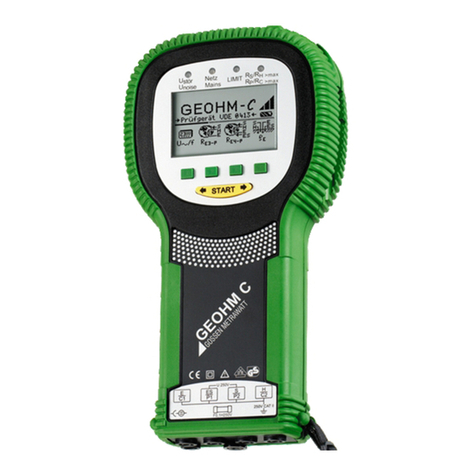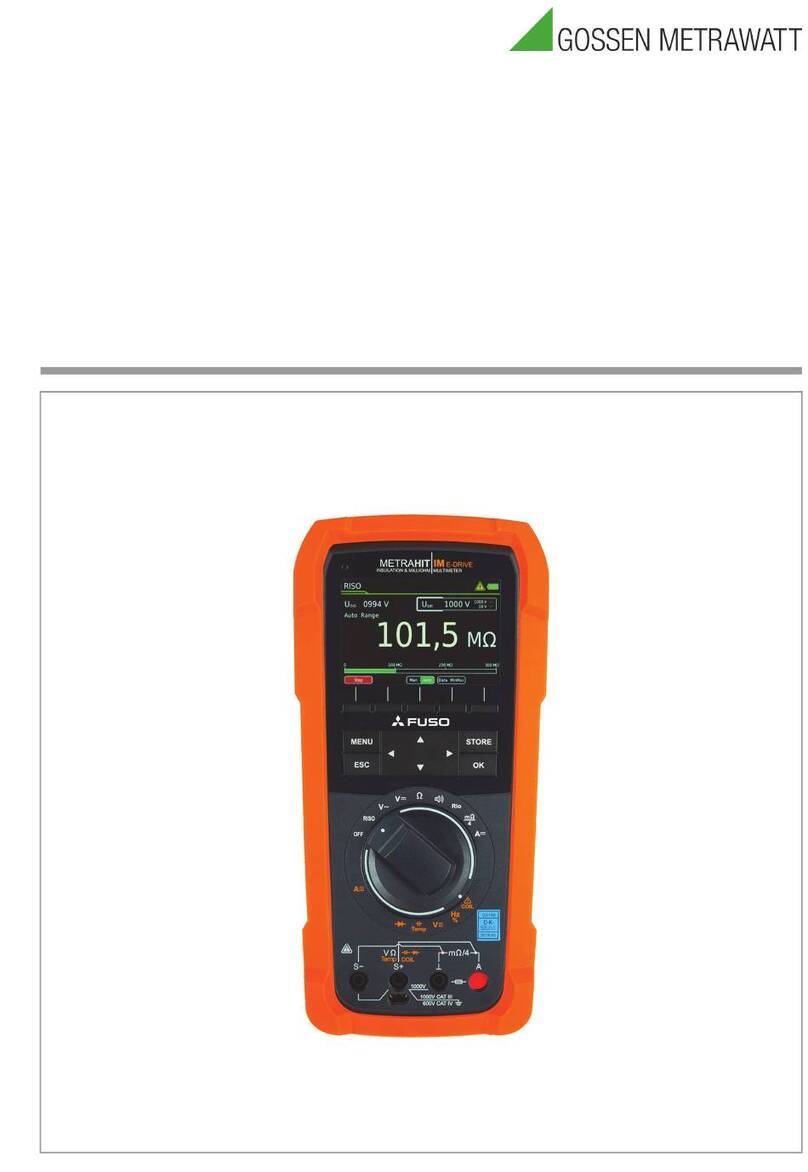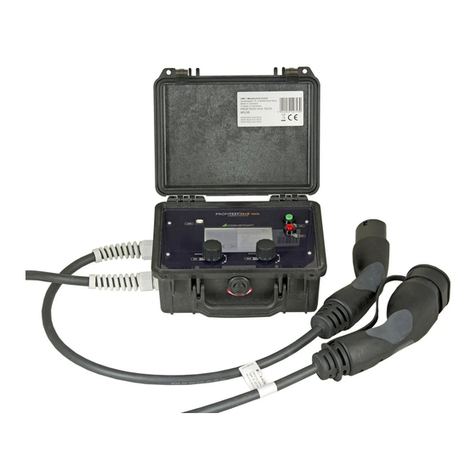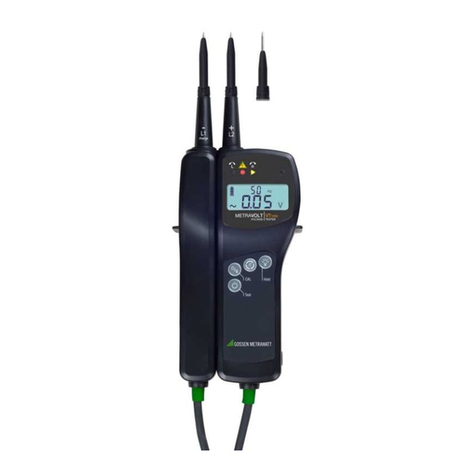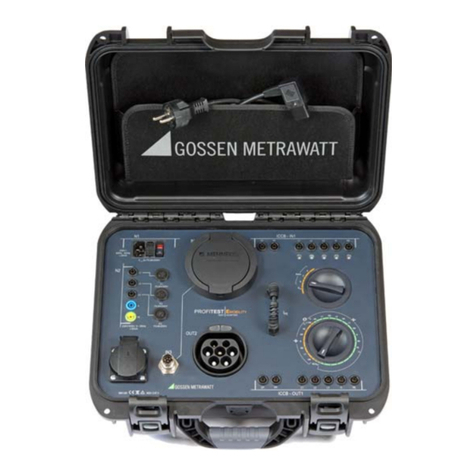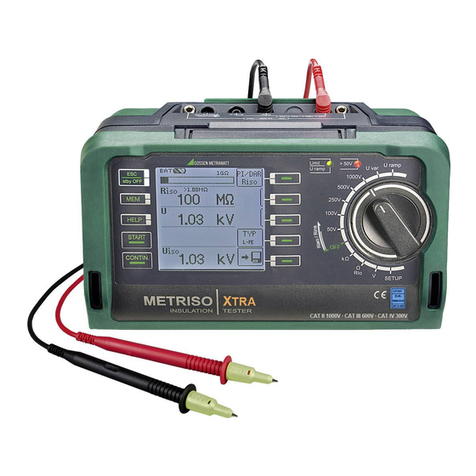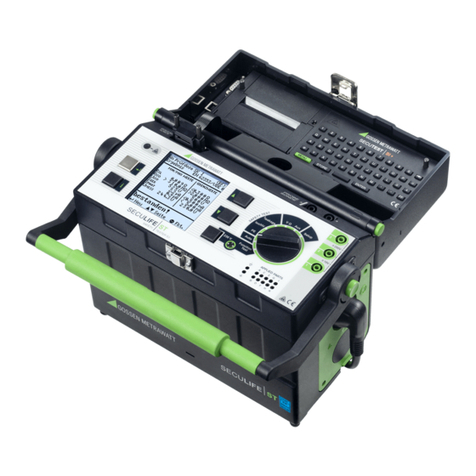
4
METRACELL BT PRO Gossen Metrawatt GmbH
1 Safety Precautions
Observe this documentation, in particular all included safety information, in order to protect yourself and others from injury,
and to prevent damage to the instrument.
• Carefully and completely read and adhere to these operating instructions, as well as the instrument’s condensed oper-
ating instructions.
The respective documents can be found at http://www.gossenmetrawatt.com. Retain these documents for future refer-
ence.
• Use only the recommended accessories with the instrument.
• Carefully and completely read and adhere to the product documentation for optional accessories. Retain these docu-
ments for future reference.
• Tests may only be performed by a qualified electrician, or under the supervision and direction of a qualified electrician.
The user must be instructed by a qualified electrician concerning performance and evaluation of the tests.
• Wear suitable and appropriate personal protective equipment (PPE) whenever working with the instrument.
• Implement adequate measures for protection against electrostatic discharge (ESD).
• Observe and comply with all applicable DIN, VDE, EN, IEC and ANSI directives. Inform yourself concerning the operat-
ing company’s specifications and guidelines, as well as those of the respective battery manufacturers.
• Batteries are electrochemical components with very high short-circuit currents. Avoid short-circuits which endanger
yourself as a user, the entire system or operating personnel.
• If the instrument doesn’t function flawlessly, remove it from operation and secure it against inadvertent use.
• The instrument may only be used as long as it’s in good working order.
Inspect the housing before use. Pay particular attention to any possible cracks and the insulation around the sockets.
Damaged components must be replaced immediately.
• Accessories and cables may only be used as long as they’re fully intact.
Inspect all cables and accessories before use. Pay particular attention to damage, interrupted insulation or kinked
cables.
Damaged components must be replaced immediately.
• Do not use the instrument after long periods of storage under unfavorable conditions (e.g. humidity, dust or extreme
temperature).
• Do not use the instrument after extraordinary stressing due to transport.
• Do not use the instrument in potentially explosive atmospheres.
• Use the instrument only within the specified ambient conditions.
• Use the instrument only in accordance with the specified protection class (IP code).
• The instrument must not be exposed to direct sunlight.
• The instrument and the included accessories may only be used for the measurements described in this manual.
• Only use accessories and the charger which are included with the battery tester or listed as optional accessories.
• Only use the instrument and the accessories within the specified measuring category.
• The measurement cables and all external cabling must not exceed an overall length of 1 meter.
• Plugging in the measurement cables and the power pack must not necessitate any undue force.
• Connect the ground wire before connecting the voltage conducting cable, and disconnect the voltage conducting cable
before disconnecting the ground wire.
• Check measurement cable continuity.
• Avoid short circuits due to incorrectly connected measurement cables.
• Never touch the conductive ends of the alligator clips, the test probes, the Kelvin probes or the angled Kelvin probes.
• Ensure that the alligator clips, the test probes, the Kelvin probes and the angled Kelvin probes make good contact.
• Do not move or remove the Kelvin probes or angled Kelvin probes during a measurement.
Unwanted sparking may otherwise occur due to test current.
• Do not remove or move the alligator clips, test probes, Kelvin probes or angled Kelvin probes until measurement has
been completed. Completion of measurement is indicated by means of an acoustic acknowledgment.
• Avoid simultaneously contacting the battery and the frame or hardware, which may be grounded.
• The battery tester is equipped with a transponder module. Determine whether or not use of the 125 kHz frequency is per-
missible in your country.
• The battery tester is equipped with a wireless interface module. Determine whether or not use of the implemented fre-
quency range of 2.402 to 2.480 GHz is permissible in your country.
• The input at the P+ measurement jack is equipped with a fuse link. The instrument may only be used as long as this fuse
is in flawless condition.
A defective fuse may only be replaced by our repair service.
